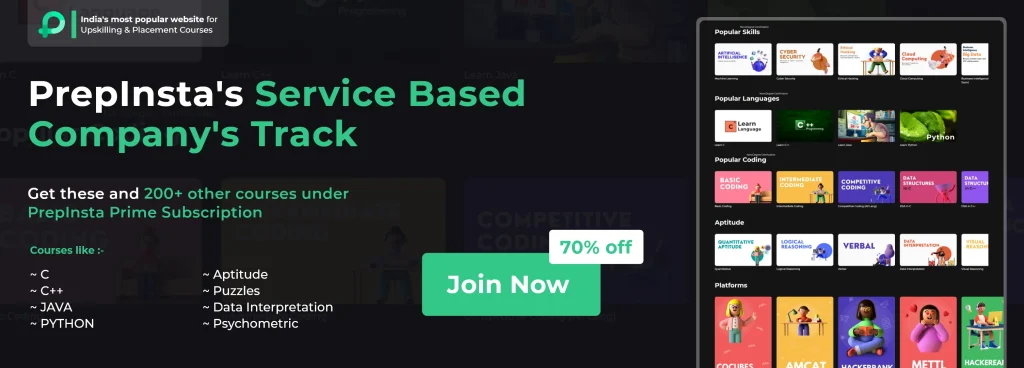Verbal Menu
- Basic Grammar
- Speech and Voices
- Tenses
- Articles
- Tenses and Articles
- Idioms and Phrases
- Subject Verb Agreement
- Prepositions and Conjunction
- Selecting Words
- Relative Pronoun
- Sentence Completion
- Sentence Ordering
- Contextual Vocabulary
- Jumbled Sentence
- Sentence Formation
- Error Identification
- Sentence Improvement and Construction
- Cloze Test
- Fill in the blanks
- Paragraph Ordering
- Para Jumbles
- Synonyms and Antonyms
- Synonyms
- Antonyms
- Reading Comprehension
- Get Off-campus Drive Updates
- Get Hiring Updates
- Contact US
PREPINSTA PRIME
Shortcuts, Tips and Tricks for Basic Grammar
Shortcuts and Tricks for Grammar:
While there is no magical shortcut to mastering English grammar completely, but there are many helpful shortcuts and tricks for grammar that can make learning faster and easier.
This comprehensive guide provides you with practical shortcuts and tricks for remembering essential grammar rules, helping you speak and write correctly with confidence.

Why Grammar Shortcuts Work
Our brains learn more effectively when information is:
- Organized – Grouped into logical categories
- Visual – Connected to images or spatial arrangements
- Memorable – Linked to funny phrases, acronyms, or stories
- Practical – Applied immediately in real-world contexts
- Repeated – Revisited regularly through spaced repetition
Shortcuts and Tricks for Grammar
Tips and Tricks for Preposition and Conjunctions
Prepositions are connecting words that connect nominal into a sentence.
Words like an, with, against, over, etc. comes under preposition, helping a noun or pronoun to connect in the sentence.
Likewise, conjunctions are also connecting words, however, they can change much more in a sentence as compared…. Continue Reading
Mnemonic: SPOT the Preposition
Space, Position, Orientation, Time – most prepositions fall into one of these categories:
- Space: in, inside, within
- Position: on, at, by
- Orientation: above, below, beyond
- Time: before, after, during
Tips and Tricks For Tenses and Articles
The Tips and Tricks for Tenses and Articles are quite simple if you have a clear view of their rules. Understanding the construction of the statement and identifying the verbs, adjective and time frames is the..continue reading
| Timeline Position | Simple | Continuous | Perfect | Perfect Continuous |
|---|---|---|---|---|
| Past | I worked | I was working | I had worked | I had been working |
| Present | I work | I am working | I have worked | I have been working |
| Future | I will work | I will be working | I will have worked | I will have been working |
Tips and Tricks For Synonyms and Antonyms
Synonyms and antonyms are a part of the vocabulary; the former means similar words, and the latter means opposite words. If one is aware of the actual meaning of the given word, then finding its similar as well as the…
Tips and Tricks For Sentence Ordering
Spotting the opening sentence:
Firstly, to arrange the jumbled sentences the need is to identify the opening sentence. Go step by step beginning with reading all the sentences, finding the main theme and then….
Tips and Tricks For Idioms and Phrases
Idioms and phrases questions hold a predominant part in the questionnaires, especially of competitive examinations. And the only way to achieve and expertise in solving such questions is a continuous reading and exploring new phrases, jotting down the interesting and important one and memorizing such…
Tips and Tricks For Error Identification
The Tips and Tricks and Shortcuts for Error Identification are important to know because it can help you solve a question quicker than with greater accuracy.There are some tips and tricks given below that will help you to quickly solve such types of questions and save your time for the remaining questions.
This is a Quick Tip: Concentrate on the overall sentence structure instead of looking for single term errors in the sentence. This way when you read the sentence multiple times, it will start giving….
Tips and Tricks For Speech and Voices
Speech and voice skills are considered to be a good parameter in English language. If you can use passive voice properly, you will be considered to have a good command on English. To solve speech and voice questions you must have considerable knowledge of grammar and general rules to solve the exercises. So here are some...continue reading
Passive Voice Formula
Passive voice follows this pattern:
BE + past participle + (by + doer)
is/am/are/was/were + verb(ed/en) + (by phrase)
Active: John wrote the letter.
Passive: The letter was written by John.
Tips and Tricks For Articles
It is very important to have an understanding and knowledge about articles in the English language. Articles can be tough to solve for the people who do not have knowledge about them. So here are some Tips and Tricks and shortcuts for Articles:In order to understand how articles are brought into use, it is important to know that nouns can be distinguished into...continue reading
The FUSS Method for “The” vs. No Article
Remember FUSS to know when to use “the”:
- Familiar to both speaker and listener: “The car we bought yesterday is red.”
- Unique things: “The sun is shining. The president gave a speech.”
- Specific reference: “The book on the table is mine.” (Not any book, but that specific one)
- Superlatives and ordinal numbers: “The best restaurant, the first attempt”
Tips and Tricks For Jumbled Sentences
Solving such jumbled sentences is more of a science than an art. It is not essential that one has to be an avid reader to address such questions. All we have to do is to read all the given sentences and try to understand the overall concept behind it. Once we get it, the rest of the task becomes quite more natural. Although there is no set rules for jumbled sentence to solve such problems, however more and more practice can bring in perfection in approaching these type of….
Tips and Tricks For Subject Verb Agreement
Just knowing the basics won’t help you need to know the Tips and Tricks and Shortcuts for Subject Verb Agreement too. Subject-verb agreement is an extremely basic segment of the English language. It means that the subject should agree with the verb in a sentence. The key here is to check whether the verb agrees with the subject in terms of both number and person. However, these questions sometimes get tricky when it comes to certain thrown-up elements in…continue reading
The EACH-ONE Rule
Words that refer to one person or thing always take a singular verb, even if they seem plural:
- Each, either, neither, everyone, everybody, anyone, anybody, someone, somebody, no one, nobody
Everyone is ready for the test.
Neither of the options is acceptable.
Prime Course Trailer
Related Banners
Get PrepInsta Prime & get Access to all 200+ courses offered by PrepInsta in One Subscription
Also Check Out
Also Check:
- Speech and Voices – Questions | Rules | How to Solve Quickly | Tricks & Shortcuts
- Tenses – Questions | Rules | How to Solve Quickly | Tricks & Shortcuts
- Articles – Questions | Rules | How to Solve Quickly | Tricks & Shortcuts
- Tenses and Articles – Questions | Rules | How to Solve Quickly | Tricks & Shortcuts
- Idioms and Phrases – Questions | Rules | How to Solve Quickly | Tricks & Shortcuts
- Subject Verb Agreement – Questions | Rules | How to Solve Quickly | Tricks & Shortcuts
- Prepositions and Conjunction – Questions | Rules | How to Solve Quickly | Tricks & Shortcuts
- Selecting Words – Questions | Rules | How to Solve Quickly | Tricks & Shortcuts
- Relative Pronoun – Questions | Rules | How to Solve Quickly | Tricks & Shortcuts
- Sentence Completion- Questions | Rules | How to Solve Quickly | Tricks & Shortcuts
Get over 200+ course One Subscription
Courses like AI/ML, Cloud Computing, Ethical Hacking, C, C++, Java, Python, DSA (All Languages), Competitive Coding (All Languages), TCS, Infosys, Wipro, Amazon, DBMS, SQL and others

 Apply For Jobs
Apply For Jobs Get Hiring Updates
Get Hiring Updates




Login/Signup to comment